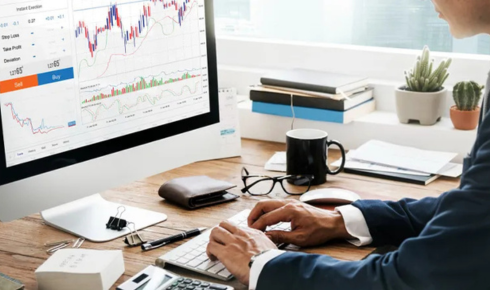The stock market is a place where one needs to be knowledgeable about the various accounts involving trading and investing. The Demat account and trading account are two accounts that any investor must understand. Although working together, these accounts differ from each other, and their understanding becomes crucial for any wise investment decision.
What is a Demat Account?
Dematerialized account or Demat is an account through which securities are held in electronic form. In the past, when physical share certificates were issued to the investors, there existed a risk of loss, theft, or damage to such certificates. A Demat account would put an end to these worries, as it allows the online storage of shares, bonds, exchange-traded funds (ETFs), mutual funds, and government securities.
Key features of a Demat account are as follows:
Electronic Holdings: All securities are stored digitally, providing a secure and efficient method of ownership.
Transfer and Settlement: The transfer of buying and selling shares ensures that the trade has been settled faster.
Portfolio Management: Investors can easily keep track of their holdings through statements or online.
Demat accounts do not facilitate trading and act merely as a storage facility for securities purchased through a trading account.
What is a Trading Account?
A trading account allows investors to purchase or sell securities on the stock exchange. It serves as a link between an investor’s bank account and the stock market. The investor’s funds are wired from the bank account to buy shares, and these are credited to the Demat account. In the same way, when shares are sold, the proceeds go from the Demat account to the trading account and then to the bank account.
Key features of a trading account include:
Execution of Trades: It permits buying and selling of shares in real-time.
Funds Transfer: The account creates a seamless interface with the investor’s bank account to facilitate transactions.
Access to Market Platforms: Trading accounts allow access to apps, online portals, and mobile applications.
Demat vs Trading Account: Key Differences
Their differences prove that both accounts are important for trading in the stock market. The Demat account, being one, cannot facilitate trading; rather trading is done on a trading account, which requires a linked Demat account to hold the securities purchased.
Importance of Understanding the Difference
The distinction between a Demat and a trading account is vital for new and existing investors. These ensure that
Storage and transaction functions are recognized by investors.
An account is set up in the correct manner to allow trading orders to be executed without hindrance.
Knowing where to find funds and securities helps to plan for investments.
Operating Together with Demat and Trading Accounts
On the opposing, a trading account and a Demat account must work together. The following is the typical arrangement:
Funding the Trading Account: Investors move money from their bank account to the trading account.
Order Entry: An investor places buy or sell orders via a stock market app or trading platform.
Settlement and Transfer: Purchased shares are credited to the Demat account, while the return for sold shares goes back to the trading account.
Holding Tracking: An investor can keep track of their holdings through Demat account statements.
This seamless integration provides investors with maximum convenience in managing funds and securities.
Opening The Demat And Trading Accounts
Getting both the accounts is the necessary first step to entering the stock market. General procedures would include:
Selecting a Depository Participant (DP) or Broker: Choose the platform that offers both Demat and trading accounts.
Submit KYC Documents: Submit your identity, address proof, and PAN card details.
Fill in the Application Forms: Write down your personal details and include details about your bank account and nominee.
Verification: Complete KYC verification in-person or via video call for regulatory compliance.
Receive Account Details: Receive the credentials to access both Demat and trading accounts to trade and monitor their investments.
Tools Investors Might Need
For modern trading, tools are essential to support investment decisions. There are many online trading platforms that offer:
Stock Market Apps: For updates on live prices, alerts on market activities monitored by portfolios.
Brokerage Calculators: For calculating transaction costs and planning trades efficiently.
Margin Calculators: Relevant for investors who trade on margin or use any leveraging facility.
Using these tools, investors will be able to make informed decisions, track market trends, and improve their trading strategies.
Conclusions
In turn, a Demat account and a trading account have different purposes yet work together. The Demat account is protected and electronically stores securities, while the trading account buys and sells. Distinction and interaction between the two accounts would provide seamless operations concerning trading and portfolio management.
Investors must open Demat account and a trading accounts with a trusted depository participant/broker and properly link them in order to facilitate a smooth transaction. State-of-the-art tools such as app-based stock-market trading, brokerage calculators, and margin application-enhanced trading disparity and real-time insight.

